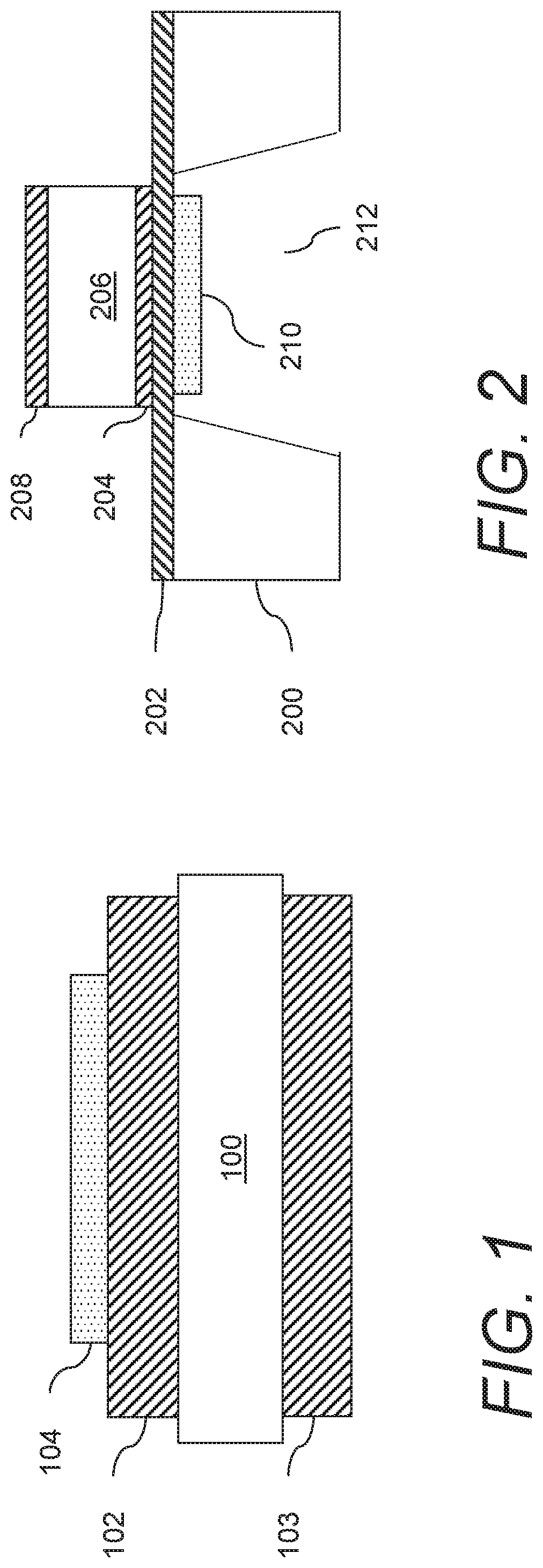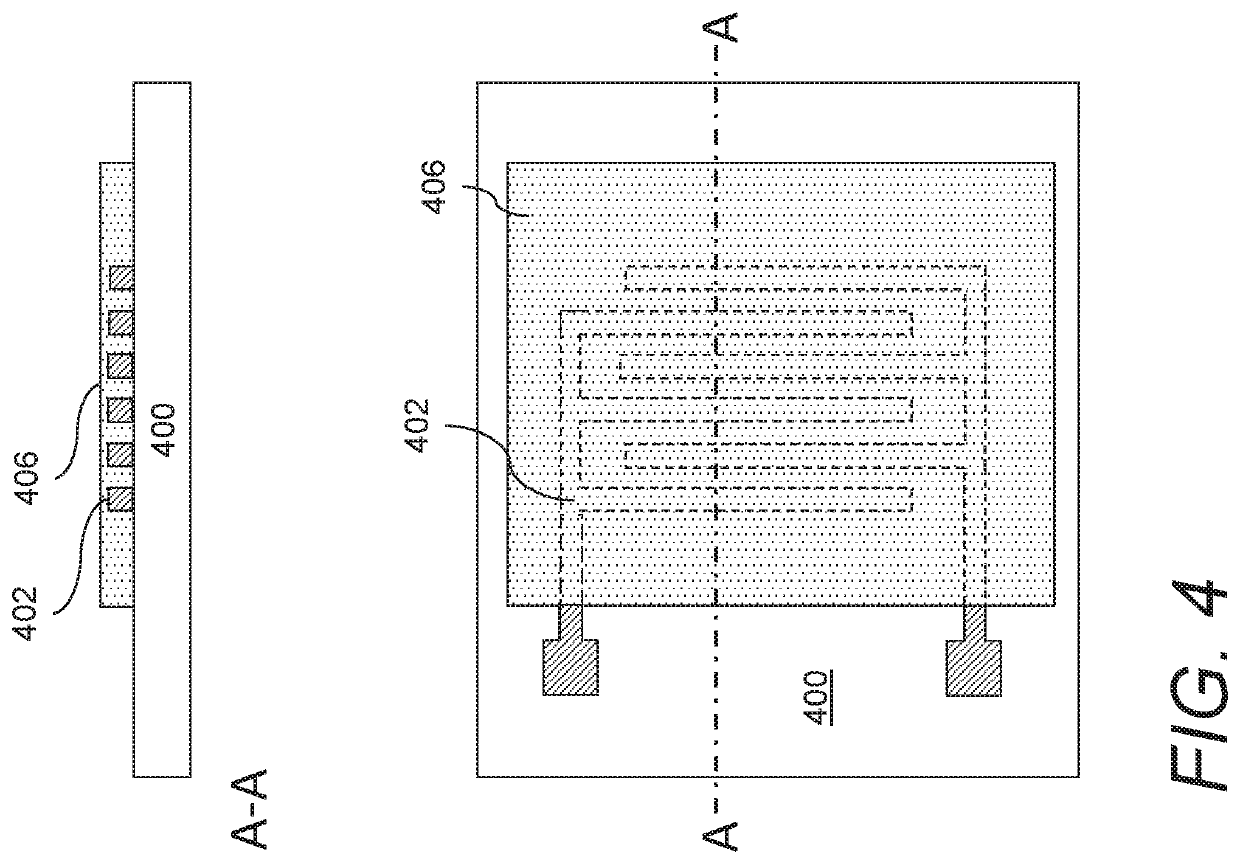Gas sensors and methods of sensing a gas-phase analyte
a gas-phase analyte and gas sensor technology, applied in the direction of instruments, material analysis using wave/particle radiation, analysis using chemical indicators, etc., can solve the problems of sensor drift and loss of sensing performan
- Summary
- Abstract
- Description
- Claims
- Application Information
AI Technical Summary
Benefits of technology
Problems solved by technology
Method used
Image
Examples
synthetic example 1
[0058]A 4-liter cylindrical reactor was charged with 485.010 g diphenylene oxide bis(triphenylcyclopentadienone) (DPO-CPD), 27.370 g of 3,5-diethynylbenzoic acid (DEBzOH), and 2422 g of γ-butyrolactone (GBL) at room temperature. The top of the flask was then equipped with a dry ice condenser, a thermocouple with a temperature controller, N2 inlets, and a stir system. The reactor was placed into a fitted heating mantle. The system was evacuated and purged three times with N2 to remove air from the vessel, which was subsequently blanketed with a constant flow of N2. The reaction system was then heated to an internal temperature of 135° C. After 1 hour, the system was allowed to cool to 90° C., followed by adding a second aliquot (27.780 g) of DEBzOH to the flask, together with an additional 300 g of GBL. The reaction mixture was again heated to 135° C. and kept at this temperature for 1 hour. The system was again allowed to cool to 90° C., followed by adding a third aliquot (27.110 g,...
synthetic example 2
[0059]DPO-CPD (109.42 g) and 1,3-diethynylbenzene (18.34 g) were added to a 1 L OptiMax reactor (glass lined, with TEFLON™ fluoropolymer drainage plug). Ethoxybenzene solvent (309 g) was added to form a deep maroon heterogeneous mixture. The reactor was transferred to an OptiMax Synthesis Workstation and sealed under an atmosphere of nitrogen gas. To the reactor top were affixed a stirring rod with a 4-paddle stirrer (elevated to 1 cm from the reactor bottom), a water-cooled reflux condenser, an internal thermocouple (placed at the median depth of the mixture, radially disposed halfway between the stirring shaft and the reactor wall), and a 1 cm baffle (placed perpendicular and adjacent to the outer wall of the reactor). The reactor was set to an internal temperature of 25° C. and stirring was initiated at 100 rpm to mix the heterogeneous contents. After a 30-minute equilibration period at 25° C., the reactor was warmed at a rate of 1° C. / min. until reaching an internal temperature ...
synthetic example 3
[0060]4,4′-(oxybis(4,1-phenylene))bis(3-phenyl-2,5-bis(4-(phenylethynyl)phenyl)cyclopenta-2,4-dien-1-one (A4B2) (200 g, 1 equivalent) and 1,3-diethynylbenzene (21.7 g, 1.02 equivalent) were added to a 1 L OptiMax reactor (glass lined, with TEFLON™ fluoropolymer drainage plug). Anisole solvent was added in an amount to provide a solution containing 30 wt % solids to form a deep maroon heterogeneous mixture. The reactor was transferred to an OptiMax Synthesis Workstation and sealed under an atmosphere of nitrogen gas. To the reactor top were affixed a stirring rod with a 4-paddle stirrer (elevated to 1 cm from the reactor bottom), a water-cooled reflux condenser, an internal thermocouple (placed at the median depth of the mixture, radially disposed halfway between the stirring shaft and the reactor wall), and a 1 cm baffle (placed perpendicular and adjacent to the outer wall of the reactor). The reactor was set to an internal temperature of 25° C. and stirring was initiated at 100 rpm...
PUM
| Property | Measurement | Unit |
|---|---|---|
| temperatures | aaaaa | aaaaa |
| temperatures | aaaaa | aaaaa |
| cure temperatures | aaaaa | aaaaa |
Abstract
Description
Claims
Application Information
 Login to View More
Login to View More - R&D
- Intellectual Property
- Life Sciences
- Materials
- Tech Scout
- Unparalleled Data Quality
- Higher Quality Content
- 60% Fewer Hallucinations
Browse by: Latest US Patents, China's latest patents, Technical Efficacy Thesaurus, Application Domain, Technology Topic, Popular Technical Reports.
© 2025 PatSnap. All rights reserved.Legal|Privacy policy|Modern Slavery Act Transparency Statement|Sitemap|About US| Contact US: help@patsnap.com



